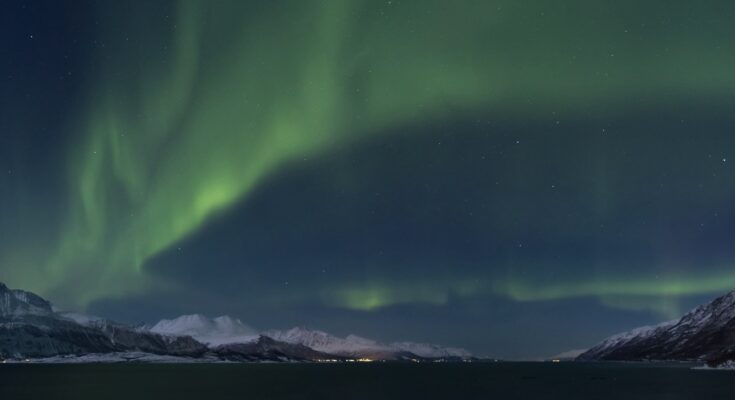Pytheas’ journey is a tale of exploration, blending curiosity, scientific inquiry, and the relentless drive to push the boundaries of human knowledge. His voyage not only expanded Greek understanding of the world but also challenged the perceptions of his contemporaries.
Origin and motivation for Arctic exploration by ancient Greeks
Pytheas was a native of Massalia, a Greek colony in Marseille, France. This thriving city was a hub of trade and culture, attracting people with a spirit of adventure and exploration.
The Greek, driven by a desire to explore new trade routes, sought to understand the geography of regions shrouded in mystery. The Greek world was abuzz with stories of distant lands, and Pytheas wanted to witness these places firsthand.
His journey was not just about trade but also about satisfying a deep intellectual curiosity. Pytheas was particularly interested in the reports of the midnight sun and other strange natural phenomena of the far north.
Route and destinations
Pytheas likely began his journey in Massalia, navigating around the Iberian Peninsula. This route was fraught with challenges, including treacherous waters and unpredictable weather, but Pytheas persevered.
He then sailed up the Atlantic coast of Europe, possibly reaching as far as the British Isles. His descriptions of Britain, its people, and customs were among the earliest recorded by a Mediterranean traveler.
The Greek explorer provided detailed accounts of the agriculture, climate, and practices on the British Isles, noting the cultivation of grain and use of honey as a sweetener. However, his journey didn’t end there.
He spoke of a place he called Thule, located six days’ sail north of Britain. While the exact location of Thule remains a subject of debate, it is generally believed to be near Iceland, Norway, or the Shetland Islands.
Pytheas described Thule as a land where the sun never set for several days during the summer, a concept that fascinated and puzzled his contemporaries. This description of perpetual daylight was one of the earliest accounts of the Arctic’s unique environment.

Observations from Pytheas’ journey
One of the most remarkable aspects of Pytheas’ journey was his observation of the natural world. He described the phenomenon of the midnight sun, which he witnessed in the Arctic, offering the first recorded account from a Mediterranean perspective.
Aristotle had theorized about such phenomena in Meteorology, but Pytheas provided actual evidence of their existence. He noted that, during the summer solstice, the sun remained visible for 24 hours. This was difficult for those in the Mediterranean to comprehend.
Additionally, while the ancient Greek was in the Arctic, he described the sea as a “congealed” substance. Modern scholars interpret this observation as an early account of ice floes or slushy sea ice. This was one of the earliest mentions of the icy conditions that define the Arctic region.
Pliny the Elder, in his Natural History, referenced Pytheas’ observations, though he approached them with skepticism. The idea of frozen seas and perpetual daylight challenged the classical understanding of the world and its boundaries.
Scientific contributions from ancient Greek exploration
Pytheas made significant contributions to geography and astronomy. He used a gnomon, a simple device that casts a shadow like a sundial to calculate the latitude of Massalia with impressive accuracy.
This method allowed him to apply precise measurements to his observations in the far north. His understanding of latitude and the Earth’s geometry was far ahead of his time, demonstrating an advanced grasp of scientific principles.
Additionally, the ancient Greek, during his time in the Arctic, made groundbreaking observations about tidal patterns and explained them with remarkable accuracy. He linked the tides to the moon’s phases, making one of the earliest known attempts to explain tidal movements scientifically.
Strabo in Geographica and Polybius in Histories referenced Pytheas’ work, though they often doubted his more extraordinary claims. These scholars, steeped in Classical traditions, found it challenging to reconcile the Greek explorer’s descriptions with their own world experiences.
Legacy and reception

The legacy of Pytheas’ journey highlights the enduring human spirit of exploration. Despite the skepticism from contemporaries like Strabo and Polybius, modern scholars have validated many of Pytheas’ observations.
His accurate descriptions of the Arctic, the midnight sun, and tidal patterns confirm his role as a pioneer in geography. Later geographers, such as Pliny the Elder and Diodorus Siculus, referenced Pytheas, underscoring the lasting impact of his work.
Pytheas’ journey inspired a reevaluation of ancient Greek exploration, revealing the sophistication and ambition of Greek navigators. His legacy is a testament to the power of curiosity and importance of challenging the limits of knowledge.
The voyage of Pytheas
Pytheas’ journey into the unknown was a bold step toward a greater understanding of the world. Although his observations and discoveries were met with skepticism at the time, they have since been valued for their accuracy.
The ancient Greek mapped new territories through his travels and laid the groundwork for future explorations. Pytheas’ journey remains a landmark in the history of exploration, demonstrating the timeless human desire to explore and understand the world.



